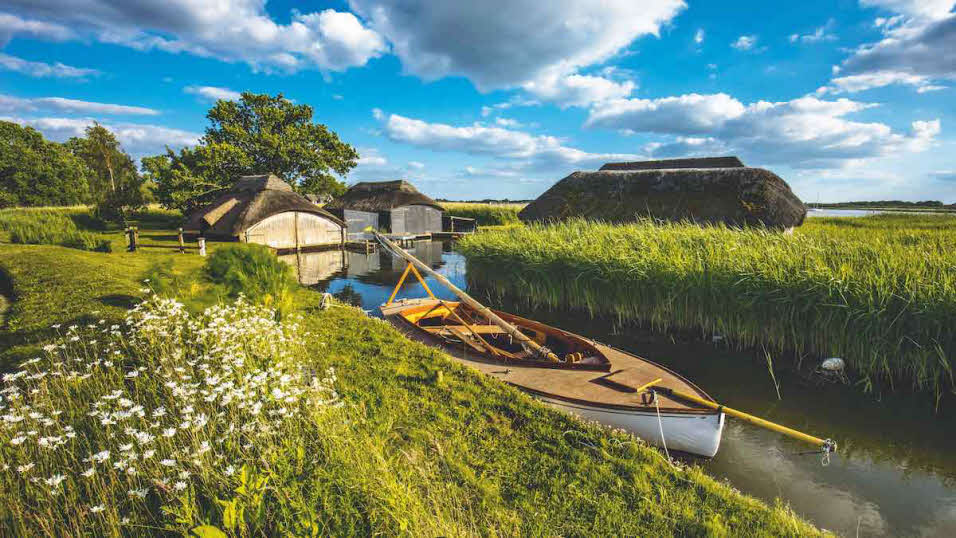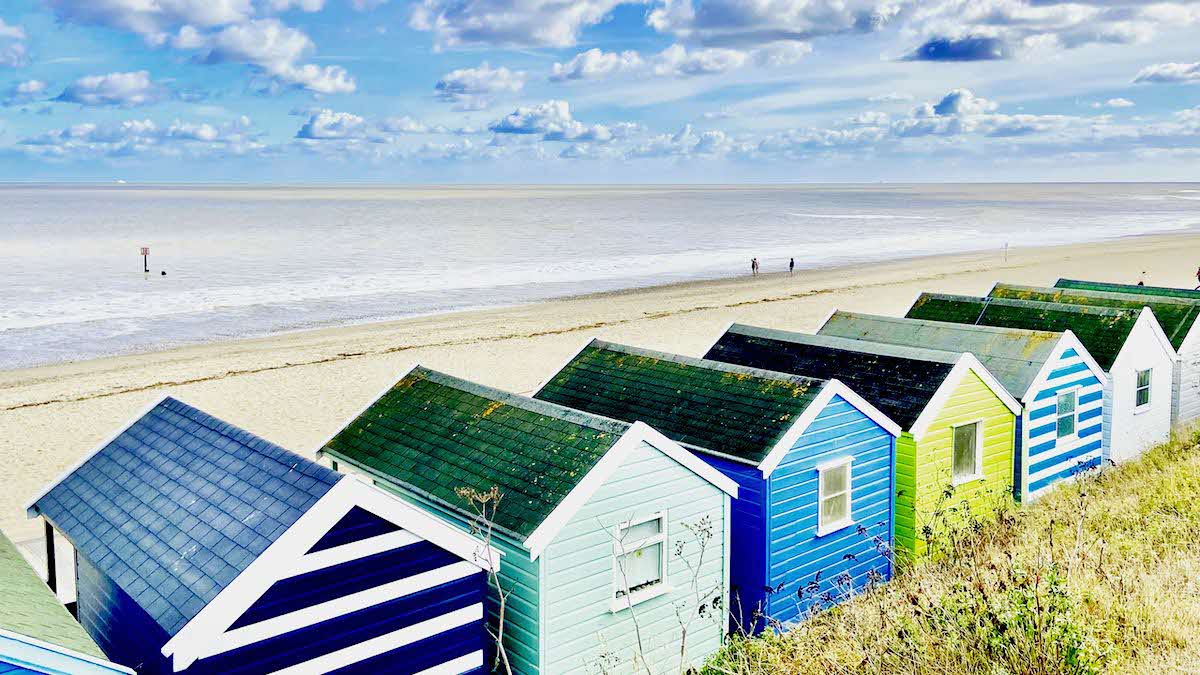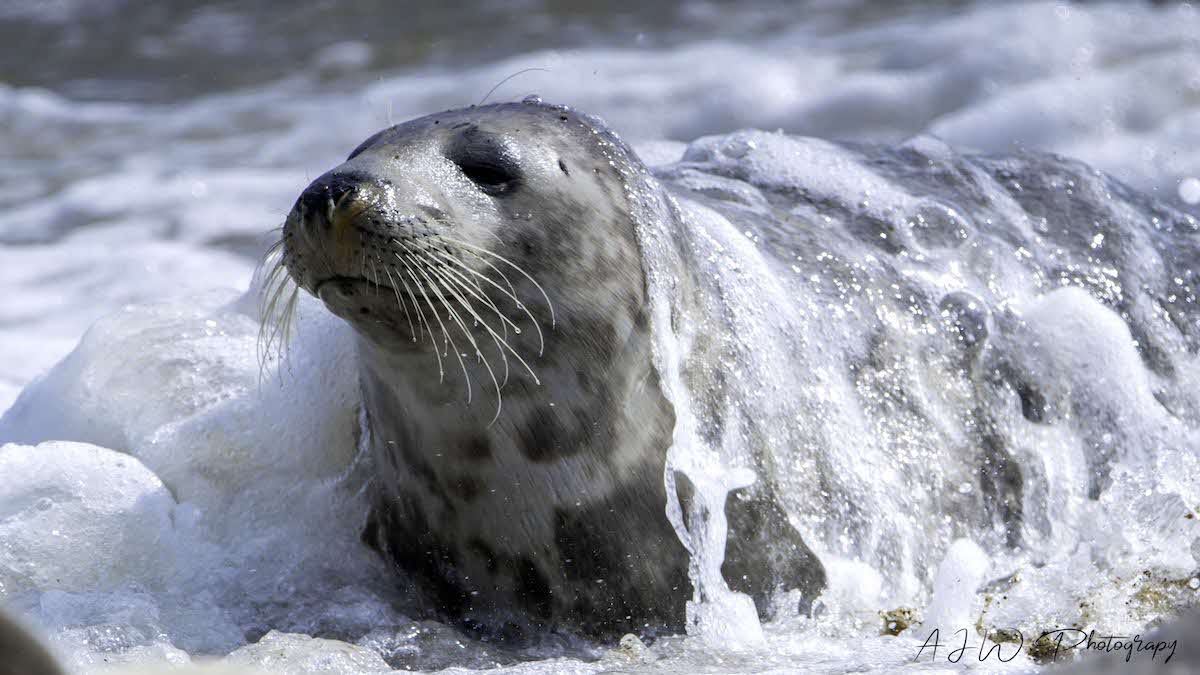Book a Club campsite
Explore hundreds of Club campsites and plan for stays throughout the year. There are plenty of locations to choose from, search and book today.
Book nowTaking in the coast and The Broads, Jane McGowan enjoys a seven-stop tour of Norfolk (and a little bit of Suffolk)
 Boat houses at Hickling Broad, the largest of the broads
Boat houses at Hickling Broad, the largest of the broadsI have lived in Norfolk all my life. It inspires me, the sea, the limitless skies, the mud and the burning sunsets and the freedom of a place where more than 50% of the neighbours are fish.” These are the words of bestselling author Raffaella Barker on the county that has inspired many of her novels.
And she is right; wherever you venture in Norfolk you are never far from open water. From the rocky coastline around Cromer to the meandering beauty of the Broads, if you are happiest on the waterfront, then this seven-stop tour is not to be missed.
Having said all that, my first port of call was White House Beach in Kessingland, which is, of course, in Suffolk... but only just. A relatively small Club campsite, it is divided into two, with one part offering direct views of the North Sea and the other surrounded by mature willow trees and an array of wildflowers. The shale and shingle beach is just moments away and makes a wonderful backdrop for a bracing walk. Dogs are permitted on the beach all year round.
Nearby, there are seaside walks a-plenty - you could visit Lowestoft to the north or the very popular Southwold, 10 miles to the south via the coastal path. The sojourn follows waymarked routes and country lanes, taking you through a section of the Benacre National Nature Reserve, where you could make the most of the wildlife spotting opportunities or simply enjoy the surroundings of reed beds, marshland and open water lagoons.
If you fancy a refreshing diversion, then the Five Bells at Wrentham comes highly recommended, serving breakfast, lunch and dinner alongside a fine selection of ales from local brewers Adnams. (Incidentally, once you arrive in Southwold, you may want to explore the company further by means of its jolly brewery tours or gin-making events.) Back on the route, don’t forget to look out for the Grade I-listed, partly ruined church of St Andrew’s at Covehithe.
 Southwold Beach Near White House Beach Club Campsite. Photo by member Sally Margerison
Southwold Beach Near White House Beach Club Campsite. Photo by member Sally MargerisonYour final destination will not disappoint. An unspoiled English seaside spot, Southwold is top and tailed by its famed collection of brightly coloured beach huts, traditional pier – with its mix of old and new attractions – and a lively bucket-and-spade-friendly beach at one end and the beautiful downs and spectacular lighthouse at the other.
The town centre is crammed with homeware and gift shops, artisanal food sellers and magnificent cafes and ice cream outlets. There are often pop-up events taking place too, including craft fairs and jumble sales. Southwold can become very busy in the summer, but it’s a place that will appeal to all generations and is not to be missed.
If you don’t fancy the walk back, then simply hop on the number 99 bus, which runs between Lowestoft and Southwold at least hourly, depending on the season. The service stops just around the corner from the Club site in Kessingland along the way.
You can also drive to Southwold (25-30 minutes) and Lowestoft (20-25 minutes) from Lowlands Certificated Location, which makes a lovely stop-off on this East Anglian sojourn. Situated just outside Beccles, this popular adults-only venue is managed by Judith and Andre, who keep visitors up-to-date on the area’s many attractions via their well-stocked information booth. Directly accessible from the site are several walks, including one leading directly to Beccles (around 30 minutes).
This lovely market town features an array of shops, cafes and pubs on twisty streets close to the River Waveney. While there, make sure you visit St Michael’s Church and its detached 16th-century bell tower. Standing at some 97ft, the structure can be seen from miles around – the 10 bells within ring out once a week.
As already mentioned, water is very much in evidence no matter where you venture on this route. A variety of vessels can be hired from venues across Beccles, such as electric day boats, canoes, kayaks and rowing boats. Should you fancy swapping your paddle for a pool, then the town even has its own lido.
 Horsey Beach Near Norfolk Broads Club Campsite Photo by member Amanda Weaving
Horsey Beach Near Norfolk Broads Club Campsite Photo by member Amanda WeavingThe Waveney is one of the seven rivers that feed the Broads National Park (the other six being the Yare, Chet, Ant, Bure, Thurne and Wensum). During the medieval period, channels of peat (a great fuel source) were dug throughout the region – subsequent flooding led these ‘paths’ to be submerged by water, creating a criss-cross pattern.
By the Victorian era the area had grown into a holiday destination and a growing number of pleasure cruisers joined the working boats and barges. Today, around eight million visitors a year are attracted to this lovely corner of England to enjoy the unique surroundings.
Covering just over 300km2, the Broads National Park is accessible from each ‘port’ on this tour, including the second Club campsite on this visit – Great Yarmouth Racecourse, which is just a short hop from Beccles over the border into Norfolk. Here, aside from the obvious race day excitement, you could make use of the adjacent golf course – Great Yarmouth and Caister Golf Club. I am reliably informed that the mainly traditional links course also offers some lovely parkland holes, although the sea breeze can sometimes play havoc with your swing...
A seaside resort since 1760 Great Yarmouth has plenty to offer modern-day holidaymakers, and families will want to make the most of the Pleasure Beach, adventure golf courses and fine selection of fish and chip and rock shops. The Club site is just 300m from the sandy shoreline – so it’s buckets and spades at the ready once again.
You’ll also find a number of pretty villages and quieter seaside spots, including Hemsby and Caister-on-Sea, close to the campsite. A little further to the north is Horsey Beach, where you can observe the resident seal colony all year round (take note of local guidelines, especially during the breeding season).
En route to site stop number four, Seacroft, is the beautiful coastal village of Happisburgh – which, just to give you a heads up, is pronounced ‘Haysbro’. A handy, free walking trail can be downloaded from happisburgh.org.uk/explore, enabling you to discover the village’s eye-catching, 18th-century white and red striped lighthouse (the oldest working example on the Norfolk coast), as well as another church tower, this time belonging to the 15th-century St Mary’s, and the beach on which the remnants of the village’s ‘low lighthouse’ can still be spotted at low tide.
In 2010 the area found fame when a significant number of flint tools were unearthed, revealing human habitation in the area 800,000 years ago.
 Cromer Pier Near Seacroft Club Campsite. Photo by member Nicola Priestley
Cromer Pier Near Seacroft Club Campsite. Photo by member Nicola PriestleyAnd so to next venues Seacroft and Incleborough Fields, which are just seven minutes’ drive apart, both lying in-between the coastal resorts of Cromer and Sheringham on the north Norfolk coast.
Seacroft Club Campsite boasts both a swimming pool (perfect for warmer days) and The Wanderer Restaurant – so you can enjoy some satisfying, freshly cooked fayre if you fancy a night off cooking.
It’s a 20-minute walk to Cromer’s town centre, where, aside from the famous Cromer Crab & Lobster Festival (which takes place in May), you’ll find an interesting selection of events throughout the year. During my visit in early May, ‘Folk on the Pier’ was in full swing and the town was alive with music as buskers played on every street corner. Once again, Cromer offers you the chance to embrace the classic English escape to the seaside, thanks to the likes of amusements, ice cream and beachside crazy golf.
Like Great Yarmouth Racecourse, Incleboro Fields Club Campsite is bordered by a golf course – The Links Golf Club. If you fancy exploring further afield on foot, you can also enjoy walks to West and East Runton from the site. The former is perhaps best known for the 1990 discovery of a fossilised skeleton of a steppe mammoth – one of the oldest fossil elephants to be found in the UK.
Seaside Sheringham is well worth a visit – there’s a promenade, beach and plenty of choice along the high street if you’re looking for food, drink or that special souvenir.
If you can tear yourself away from the coast, Norfolk has its fair share of stately homes and gardens. The most famous is, of course, Sandringham – the country retreat bought by the royal family in 1862. My visit to the county coincided with the Coronation of King Charles III – probably not the ideal time to pop by. But, should you fancy finding out more about this fabulous estate, tours are available throughout the year (and if you’re looking for a fitness challenge, Parkrun takes place every Saturday morning across the parkland).
For Club members there is, of course, the option of staying at The Sandringham Estate Club Campsite, but sadly a stop here wasn’t on the agenda this time around. My next site was farther inland: The Station CL in Attlebridge. Coronation festivities were in full swing and it was lovely to see how owner Janet and partner Keith were facilitating an event members will remember for years.
 Oliver Cromwell's House, Ely
Oliver Cromwell's House, ElyAs the name suggests, this pretty CL is set just behind a converted former station (now doubling as the owner’s home). The old railway line - Marriotts Way – has been adapted for horseriders, walkers and cyclists and covers 26 miles from Norwich to Aylsham (see norfolk.gov.uk for details).
There is a captivating, shifting landscape to enjoy along the route – including the Wensum river valley and Whitwell Common. If you head south-east from Attlebridge, the city of Norwich appears after about eight miles. offering the chance to visit the beautiful cathedral (it’s dog-friendly) and enjoy another riverside walk. The latter takes in some of the old city and landmarks such as Pull’s Ferry and Cow Tower – a 14th-century artillery blockhouse constructed as part of the area’s defences. It is free to enter and, again, dogs (on leads) are welcome.
The last Club campsite on my route was Thetford Forest, which revealed another aspect of the county: its magnificent woodland. Situated on a Forestry Commission plot, it’s a quiet and secluded site, offering access to some truly lovely trails beneath the canopies of ancient trees.
Towns in the area worth exploring include Swaffham and King’s Lynn, but I headed a little farther afield to Ely in Cambridgeshire, where you will find loads to keep you occupied. You could fill a day with a visit to the breathtaking cathedral, The Stained Glass Museum (housed in the cathedral) and Oliver Cromwell’s House. Once again, Ely offers you the chance to spend time on the water, with boat trips of various types available for daytrippers to enjoy.
As the rain set in once again (my tour had been frequently interrupted by the British weather!), it was time to say goodbye to this watery wonder of a region. But even the dark clouds overhead couldn’t put a damper on my desire for a prompt return.